In downtown Greenwich 11 houses on Benedict Court and Benedict Place are set to be demolished as early as next week to make way for a 120-unit residential development.
No one should be surprised. The project was almost a decade in the making.
That said, the timing is interesting given so many people are holding their breath waiting to see if Governor Lamont signs into law the omnibus housing bill HB 5002 – an 92-page kitchen sink legislation aimed at encouraging housing construction and increased density throughout the state in response to the acute housing shortage that has impacted affordability and increased homelessness.
Somewhere in the context of this controversial if not contentious housing bill whose title is “An Act Concerning Housing and the Needs of Homeless Persons,” is the Benedict development, known to many by the name of the man behind the application, Joe Tranfo.
Approved in May 2024 by the Greenwich Planning & Zoning commission, the development will feature two structures separated by a driveway and a total of 120 units and 180 parking spaces. The development was submitted under the state’s 8-30g statute and features a whopping 40% affordable units, far more than required in an 8-30g.
Originally it was proposed in 2017 as a smaller, 70-unit development with 12 affordable units, plus two underground levels of parking and other amenities for the town including a new public park.
That smaller proposal was denied.
At the time, the P&Z commission, under the leadership of Richard Maitland, balked at the idea of a multi-story apartment building. Commissioners said they feared the development would result in other developers proposing similar projects. Commissioner Macri referred to “red flags popping up everywhere.”
With hindsight, those were days of innocence.
Last week Planning & Zoning commission chair Margarita Alban penned a rare opinion piece saying that in pressing towns to increase housing density, HB 5002 failed to tackle funding or economics, (Alban: HB 5002 Fails Us All June 3, 2025). By way of example, she said her commission had recently approved over 1,000 new housing units in Greenwich but they have yet to be built.
“Builders tell us they are struggling with increases in materials costs, interest rate hikes and tariff uncertainty,” she said.
Given the challenging economic climate for real estate, it’s something of a miracle that the Tranfo project will soon rise behind St. Mary Church on Greenwich Ave, taking the place of several turn of century houses and carriage houses.

Posted for demolition, 19 Benedict Place, built in 1925, was home to Joe Tranfo’s offices since 1994. June 5, 2025, Photo: Leslie Yager

Rendering of residential building to be constructed at Benedict Place and Benedict Court.
To be demolished are buildings at 3, 5, 7, 11, 13 and 15 Benedict Court and 7, 9, 15, 19, 21 and 23 Benedict Place.
On Thursday Mr. Tranfo, raised in Greenwich, seemed happy that after all these years, the demolition work was imminent.
The properties have all been posted for demolition far longer than the required 45 days, and utility companies have been busy disconnecting lines.
All the properties are vacated, except one, where on Wednesday Mr. Tranfo was busy packing a few remaining items at 19 Benedict Place where he has had his offices since 1994.

View from third floor of 23 Benedict Place. The upper levels of the 6-story building to be built will benefit from spectacular views of Greenwich Harbor and Long Island Sound. June 5, 2025 Photo: Leslie Yager
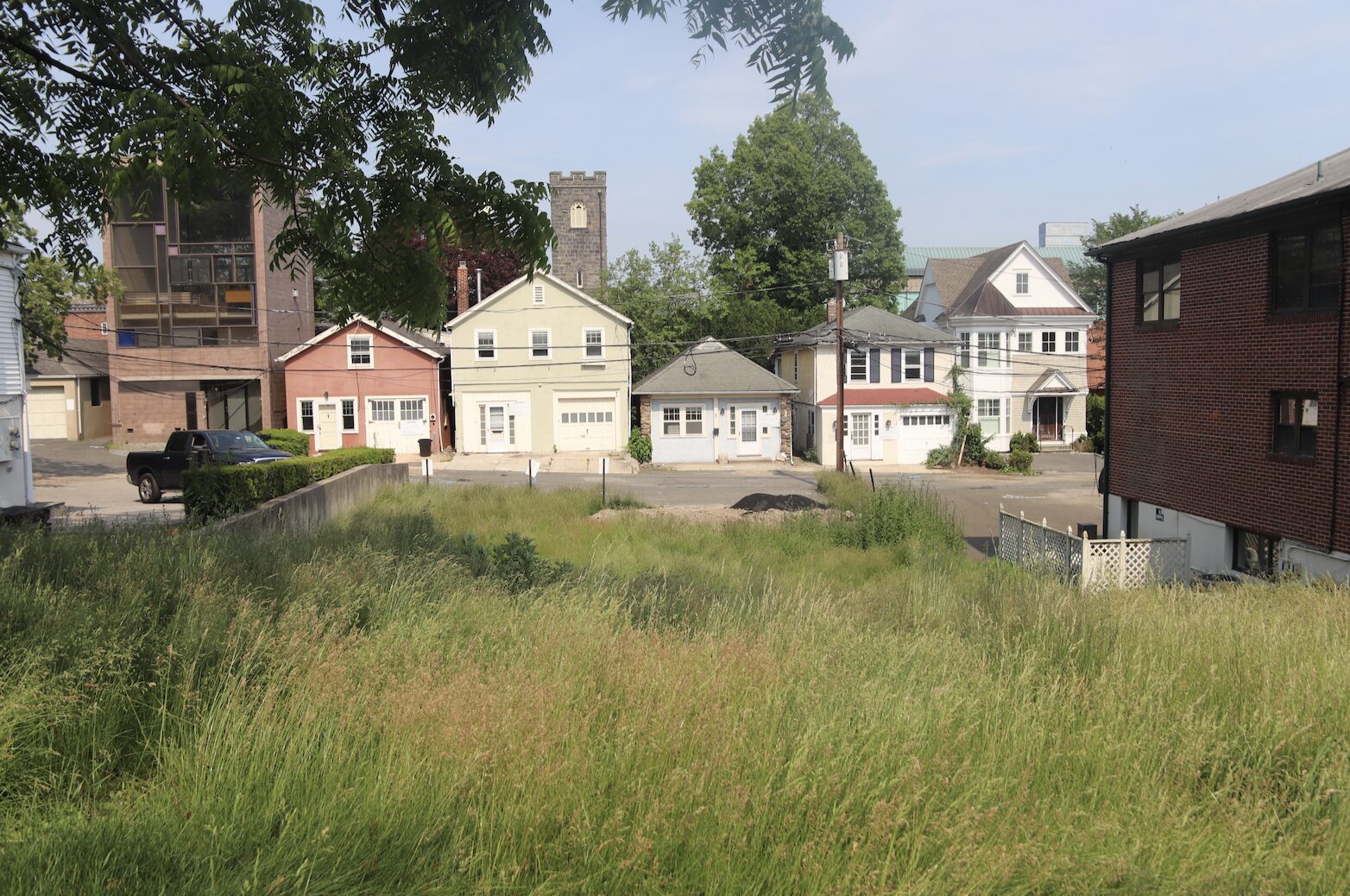
View from the vacant parcel beside 19 Benedict Place of a row of former carriage houses (3, 5, 7, 11, 13 and 15 Benedict Court) to be demolished. June 5, 2025 Photo: Leslie Yager.
Before leading a walk-through of several of the houses posted for demolition, Tranfo said that even though the project was years in the making, he ultimately benefited from the vision of Elias Cornelius Benedict (January 24, 1834 – November 22, 1920) who was explicit about his vision for the neighborhood back in 1907 when he created a subdivision.
Benedict’s deed restrictions for Benedict Place and Benedict Court were so specific that more than 100 years later, none of the properties feature contamination that has bewildered the town and other developers.
“There never was a dry cleaners or an auto body shop here,” Tranfo said. “There were no graveyards here either – it was 120 years of no nonsense.”
“There were restrictions against bone burning and piggeries,” Tranfo said with a laugh.
Mr. Benedict, nicknamed “Commodore,” had envisioned a sophisticated downtown neighborhood west of his own estate, “The Maples.”
“The plan was for an English mews,” Tranfo said.
AND THE SAID GRANTEE for himself, his heirs, executors administrators and assigns does hereby covenant and agree to and with the said grantor, his heirs, executors, administrators and assigns as follows:
That neither the said grantee, his heirs or assigns will suffer or permit upon the premises herein described any milkman’s stable, nor livery stable, carpenter shop, piggery, slaughter house, smith shop, forge, furnace, steam engine, brass foundry, tin, nail or other iron factory, nor any manufactory for the manufacture or making of gun powder glue or varnish, vitriol, ink or turpentine, or for the boiling of bones, or the dressing, tanning or preparing of skins, hides or leather, nor any hennery, brewery, distillery, oil or lamp black factory, nor any building for the carrying on of any noxious or dangerous trade or business nor any building for the storing, keeping or maintaining any fire engine, or truck or hose carriage nor any hospital, and that they will not use or permit to be used the said premises or any part thereof for the use or carrying on any trade or business. And the said grantee for himself, his heirs, executors, administrators and assigns does hereby further covenant and agree that he will not sell or suffer or allow to be sold on the premises hereby conveyed any part thereof any strong or spirituous liquors, or ale, beer or wine, or intoxicating liquors of any kind.
PROVIDED HOWEVER, that nothing herein contained shall prevent the erection of a neat private stable or garage upon the premises above described.
Tranfo purchased 19 Benedict Place in 1994.
From there he purchased an adjacent vacant parcel. One by one over the decades he purchased all the properties, including 21 Benedict Place which for many years several nuns affiliated with St. Mary Church called home.
Among the row of carriage houses on Benedict court is #15, a tall, narrow stone house designed in 1980 by Greenwich architect Dimitri Bulazel to include a private walled garden and terrace and dramatic 20-ft ceiling living room on the third floor.
With the demolitions coming soon, Tranfo said there were plans to upcycle as much as possible, including architectural salvage, kitchen appliances and mechanicals including AC compressors.
As for Benedict’s “The Maples” at the corner of Lewis Street and Putnam Ave, Tranfo said not only is that estate long gone, giving way to the office building that was for many years home to Chesebrough-Pond’s at 33 Benedict Place, but the original Maple trees are all gone as well.
“We plan to plant disease-resistant, heritage Maples (in the new development),” he explained.
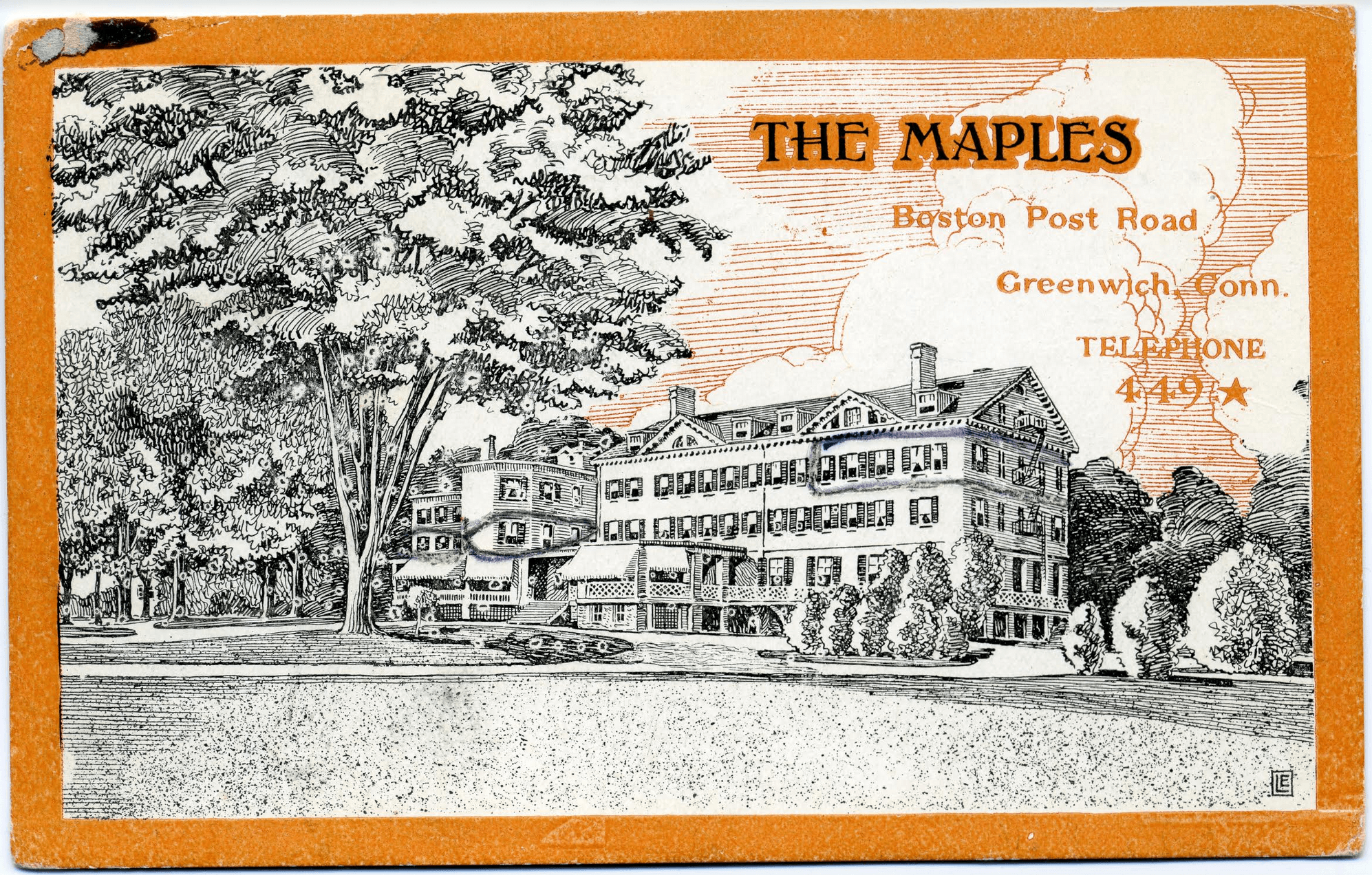
Postcard of The Maples, courtesy Greenwich Historical Society. E.C. “Commodore” Benedict, who was personal friends with Grover Cleveland, lived in an estate at the corner of Putnam Ave and Lewis Street called The Maples, which was later turned into a private inn. Benedict built “Indian Harbor” in 1895 on an 80-acre waterfront peninsula in Greenwich, and moved there in 1907 to be closer to Long Island Sound. That year, his three acre estate was subdivided resulting in Benedict Court and Benedict Place. Mr. Benedict, described at the time as “a famous millionaire yachtsman” by the Hartford Courant, died in 1920 at the age of 87.

21 Benedict Place was once home to a group of nuns. Today it is posted for demolition. June 5, 2025 Photo: Leslie Yager
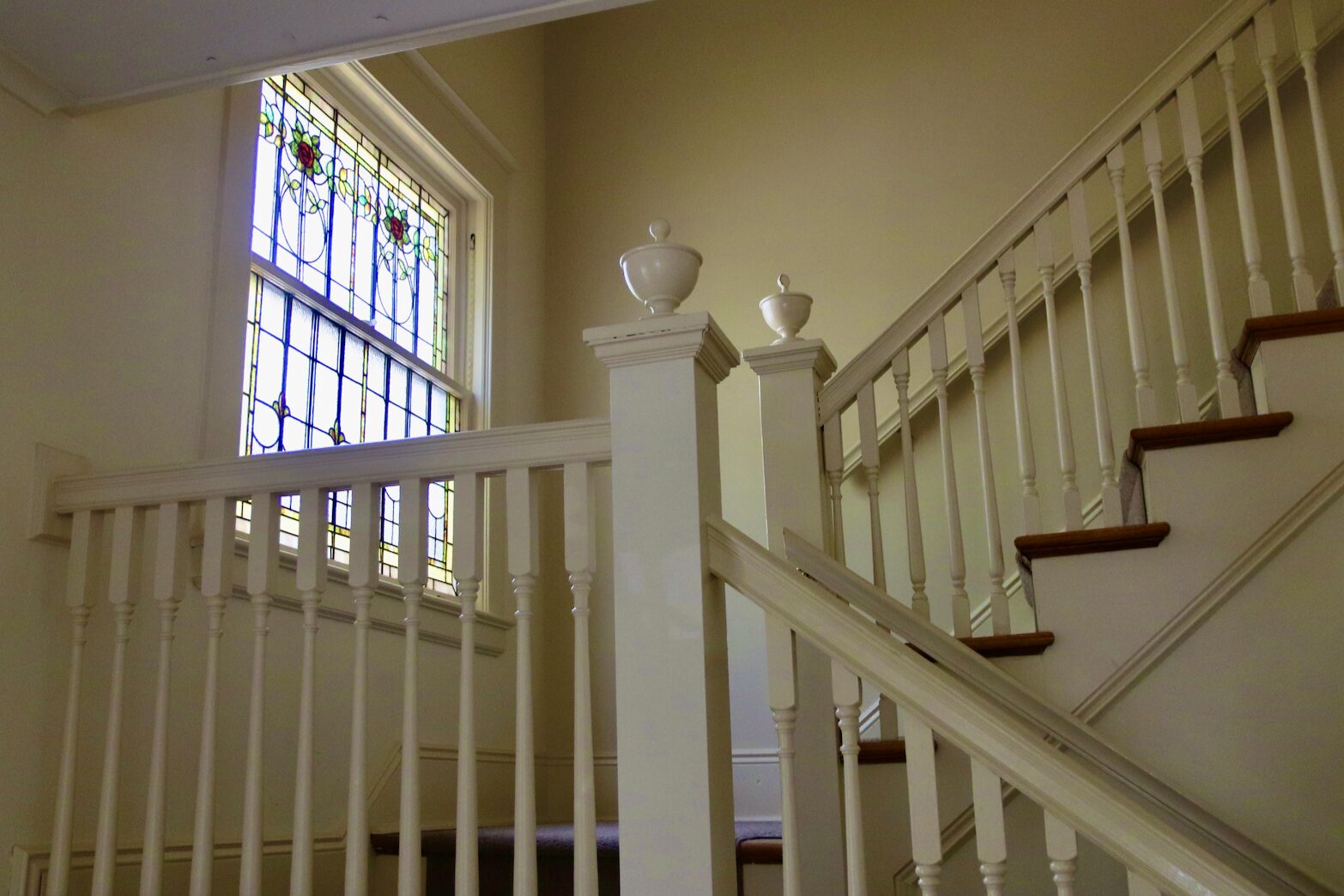
Stained glass window inside 21 Benedict Place. June 5, 2025 Photo: Leslie Yager
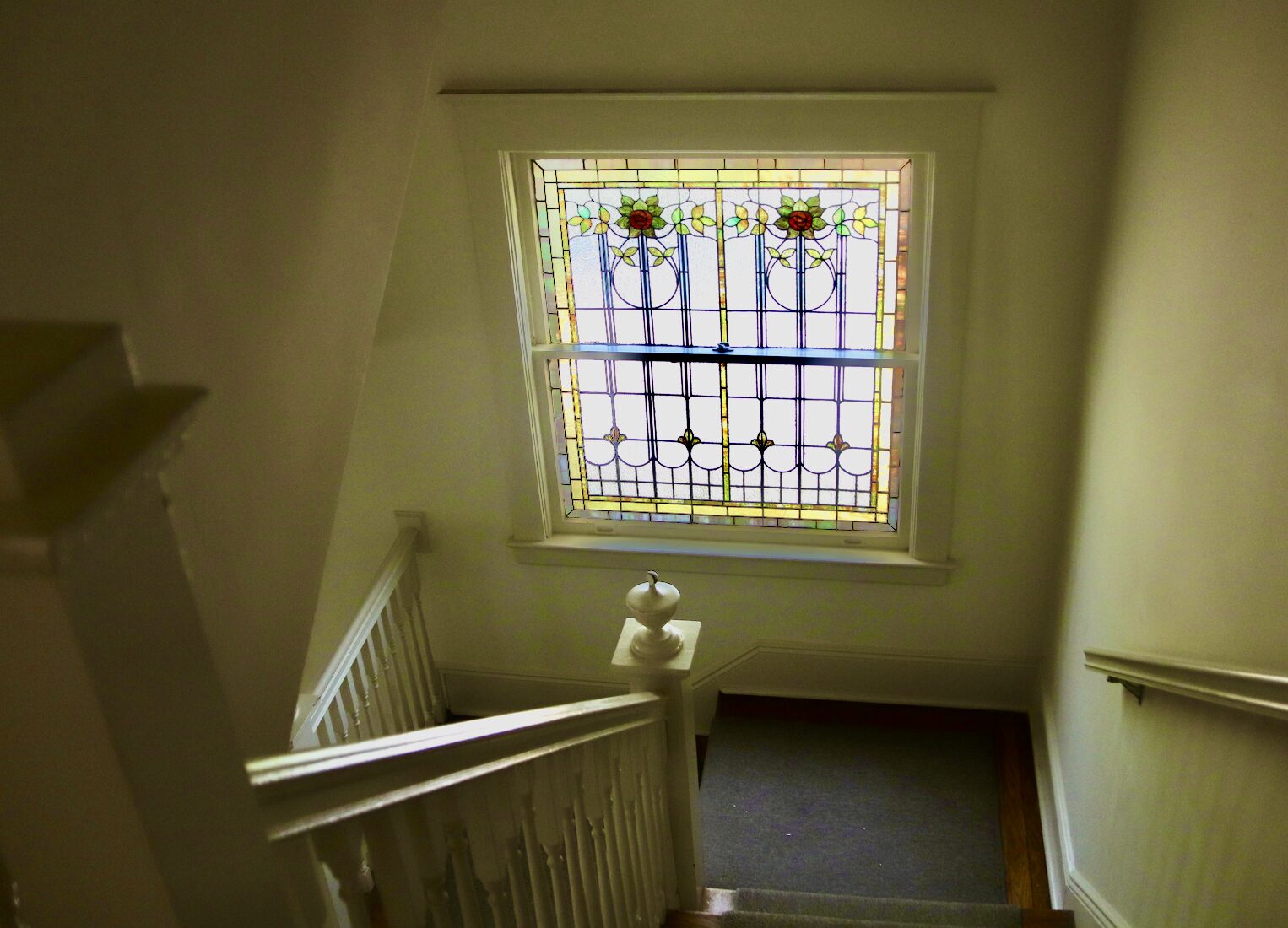
Balustrade holding up the railing and finial in the stairwell featuring a stained glass window a 21 Benedict Place. June 5, 2025 Photo: Leslie Yager
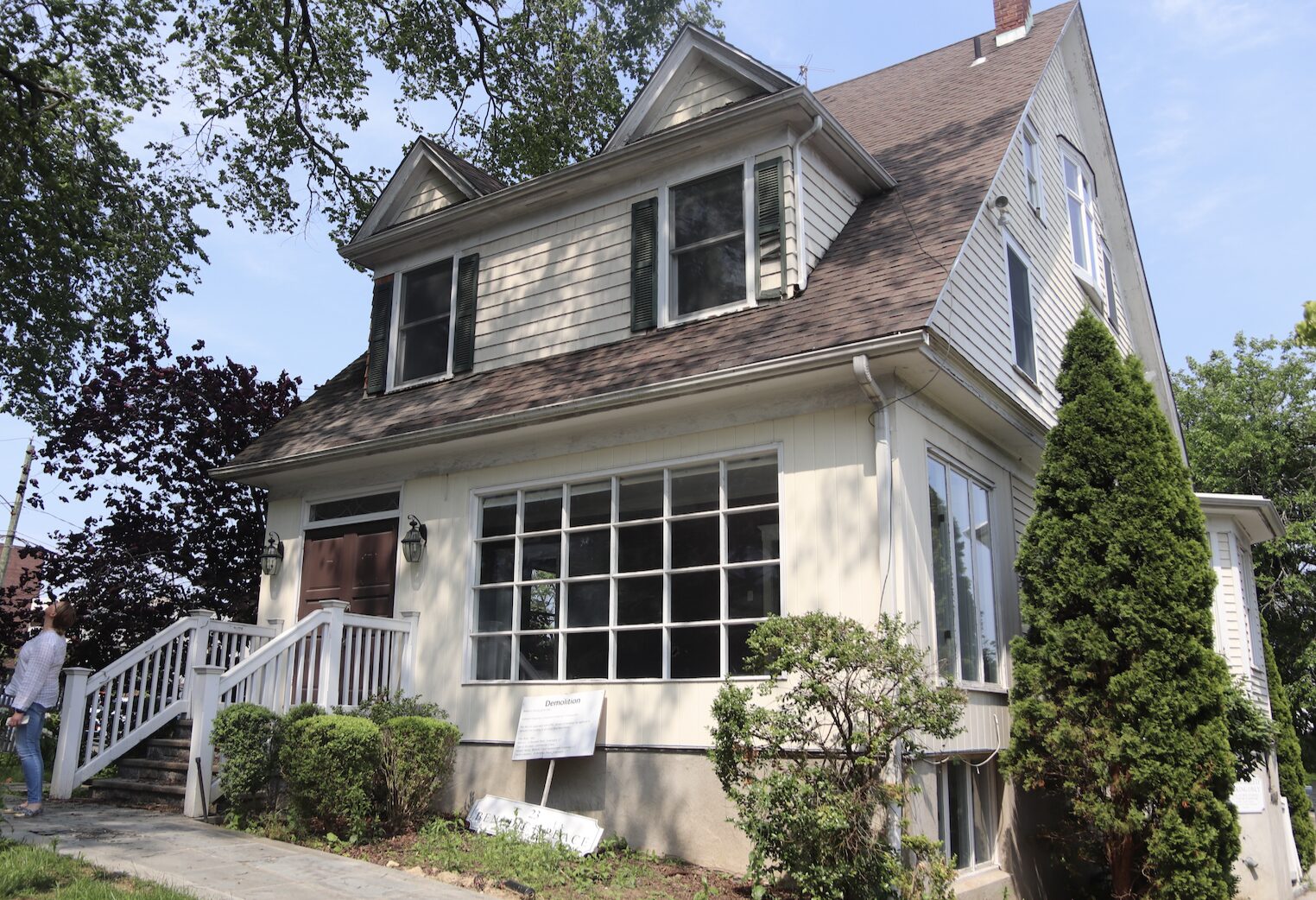
23 Benedict Place is posted for demolition. June 5, 2025 Photo: Leslie Yager
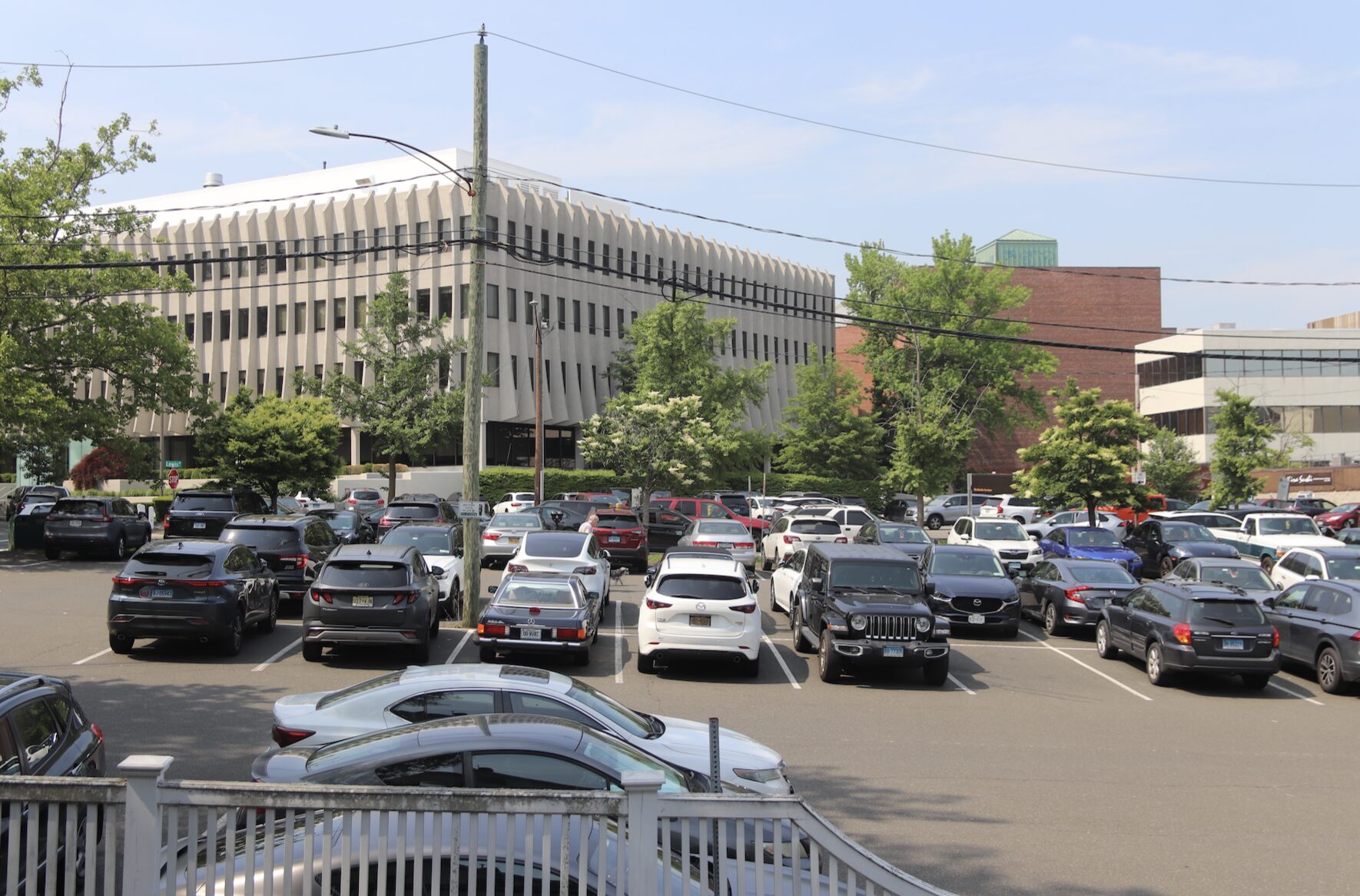
View from 23 Benedict of the office building that was once home to Chesebrough-Pond’s and before that, “the Maples,” home of Elias “Commodore” Benedict. That mansion became an inn when Benedict moved closer to the water into Indian Harbor. June 5, 2025 Photo: Leslie Yager
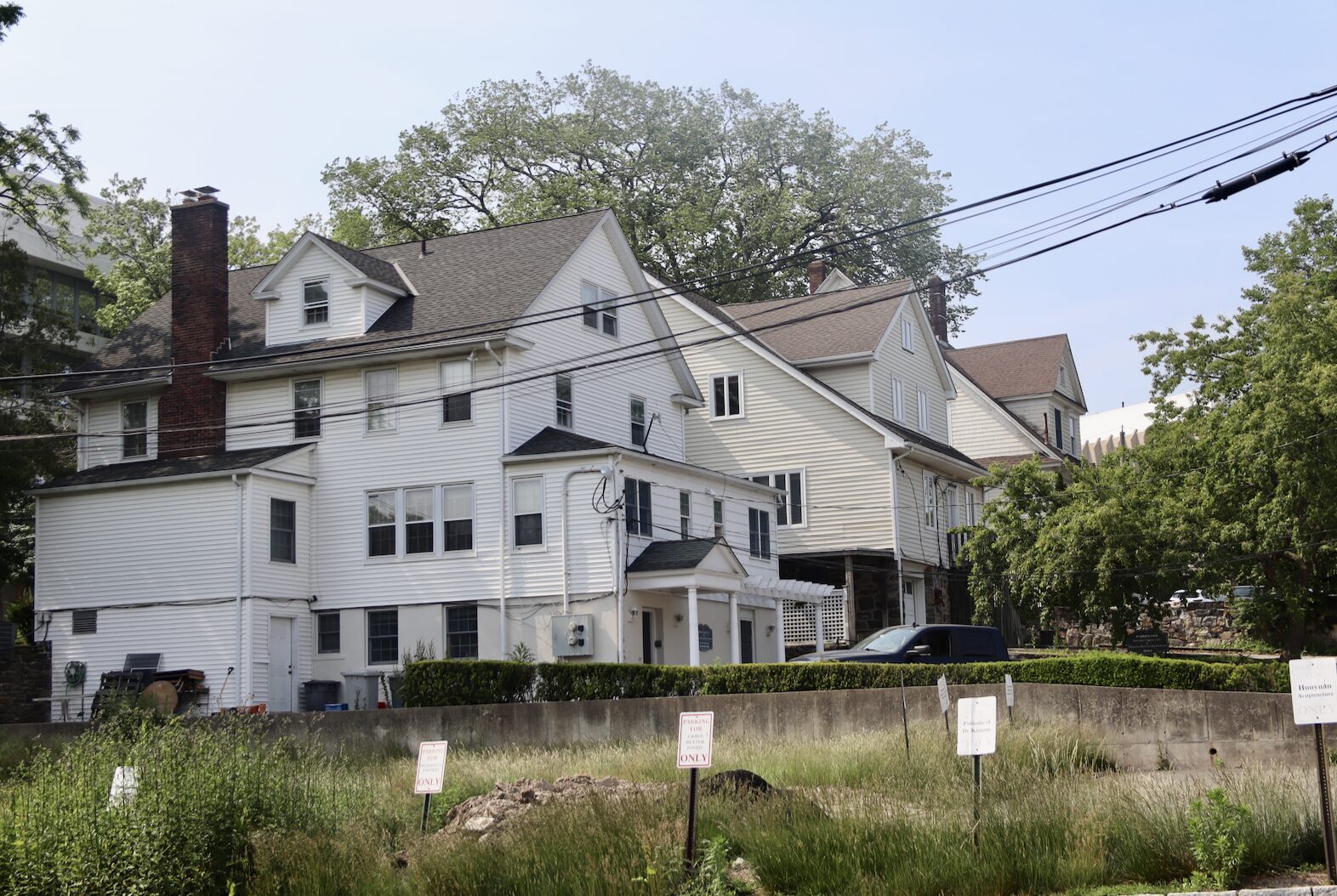
Rear of 19, 21 and 23 Benedict Place, soon to be demolished. June 5, 2025 Photo: Leslie Yager
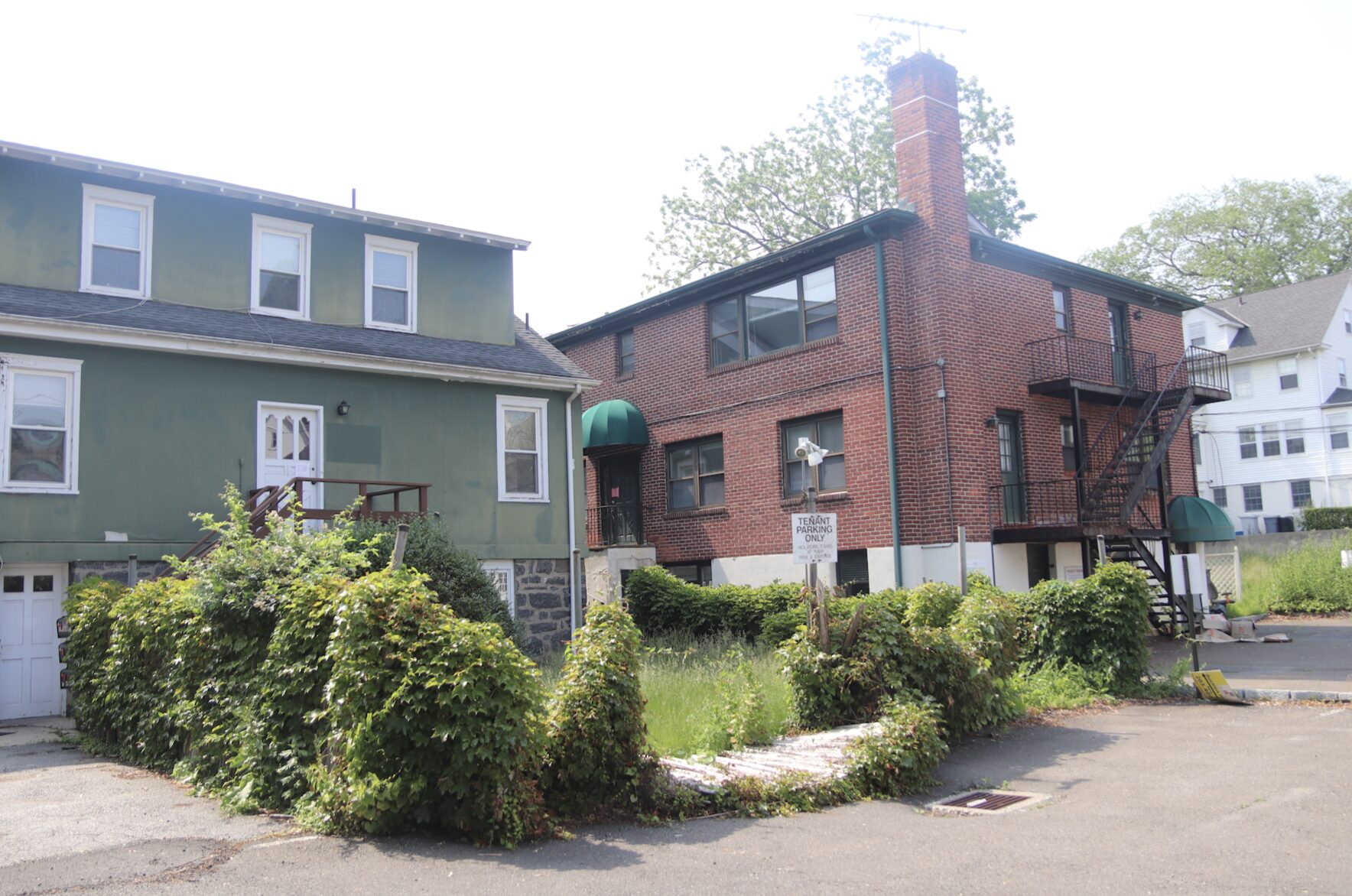
Rear of 7 Benedict Place and 9 Benedict Place soon to be demolished. June 5, 2025 Photo Leslie Yager

View from third floor of 23 Benedict Place includes St Mary church. In foreground, the garage at left belongs to St. Mary Church and will not be demolished. June 5, 2025 Photo: Leslie Yager

View of the back of St Mary Church from 21 Benedict Place. June 5, 2025 Photo: Leslie Yager
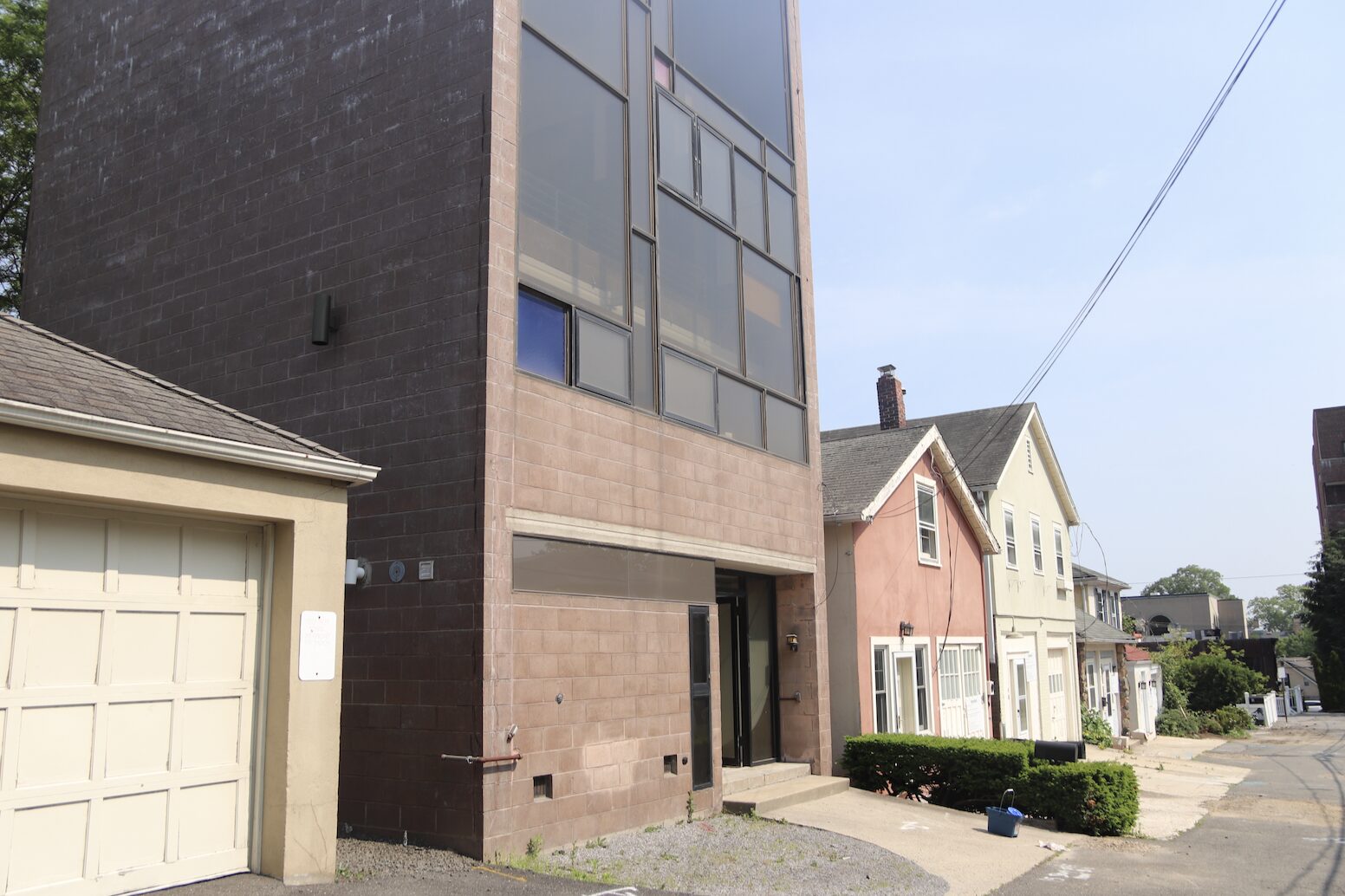
Row of houses to be demolished: 3, 5, 7, 11, 13 and 15 Benedict Court. June 5, 2025 Photo: Leslie Yager

Third floor of 15 Benedict Court featured a living room with 20 ft ceilings and a wall of glass. June 5, 2025 Photo: Leslie Yager
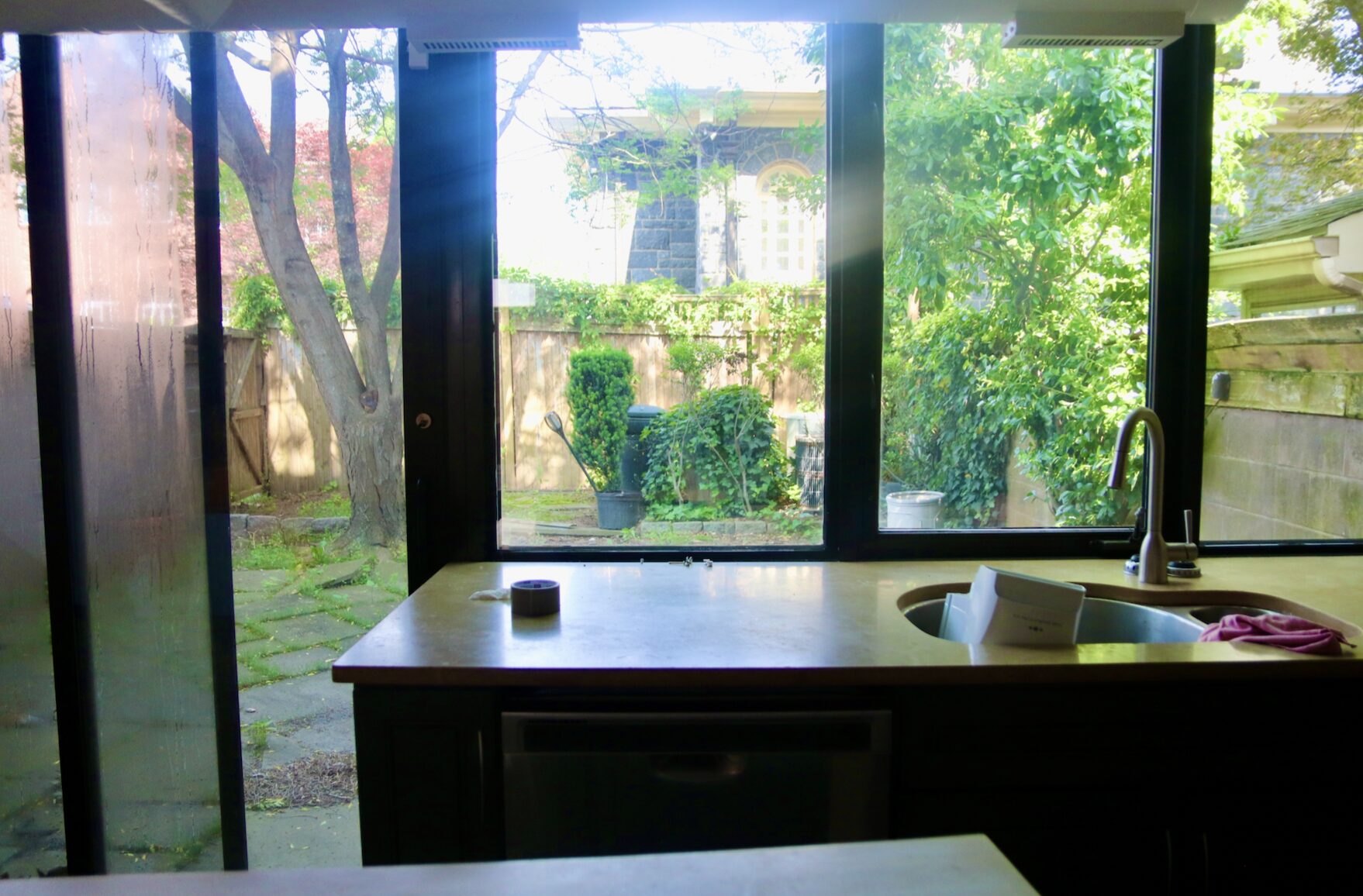
Ground floor of 15 Benedict Court featured kitchen and wall of windows looking onto a private courtyard behind St. Mary Church. June 5, 2025 Photo: Leslie yager
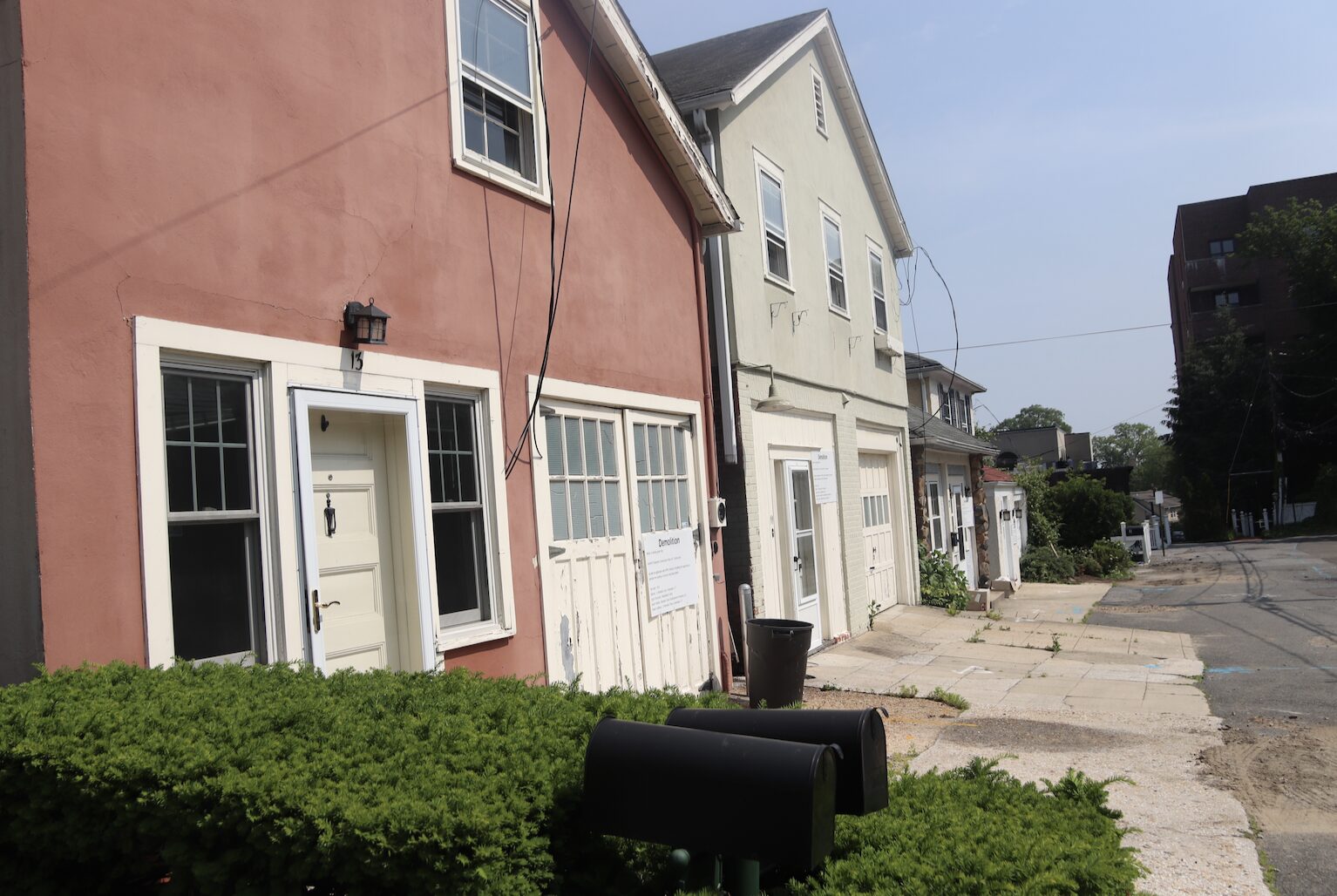
Former carriage houses on Benedict Court posted for demolition. June 5, 2025 Photo: Leslie Yager

15 Benedict Court, a tall, narrow stone house designed in 1980 by a Hungarian architect Bulazel to include a private walled garden and terrace ,and dramatic 20-ft ceiling living room on the third floor. June 5, 2025 Photo: Leslie Yager
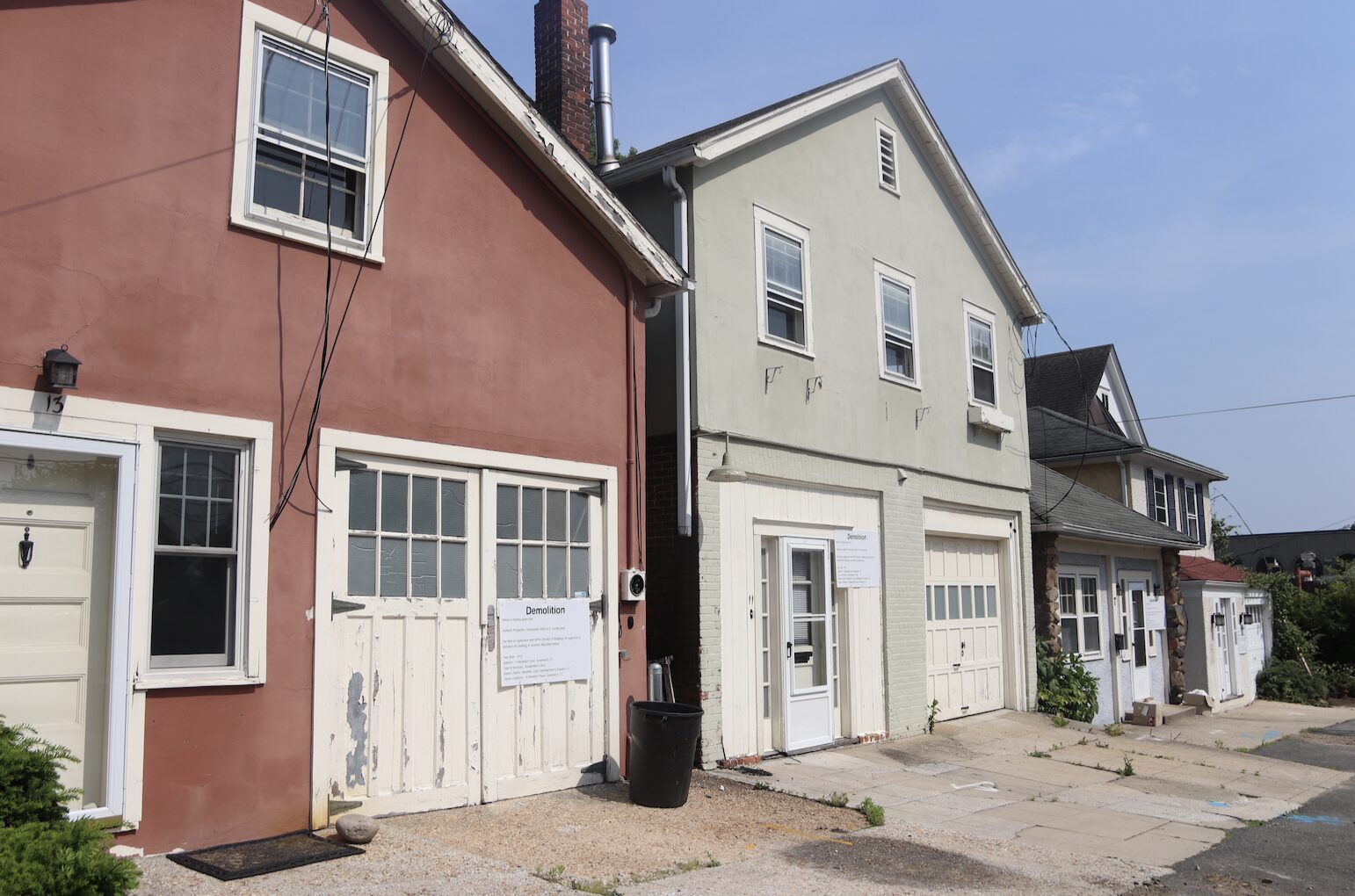
Former carriage houses on Benedict Court posted for demolition. June 5, 2025 Photo: Leslie Yager

13 Benedict Court with its original carriage house doors. June 5, 2025 Photo: Leslie Yager

15 Benedict Court at left with its stained glass windows from 1980 and 13 Benedict Court with its original carriage house doors. June 5, 2025 Photo: Leslie Yager
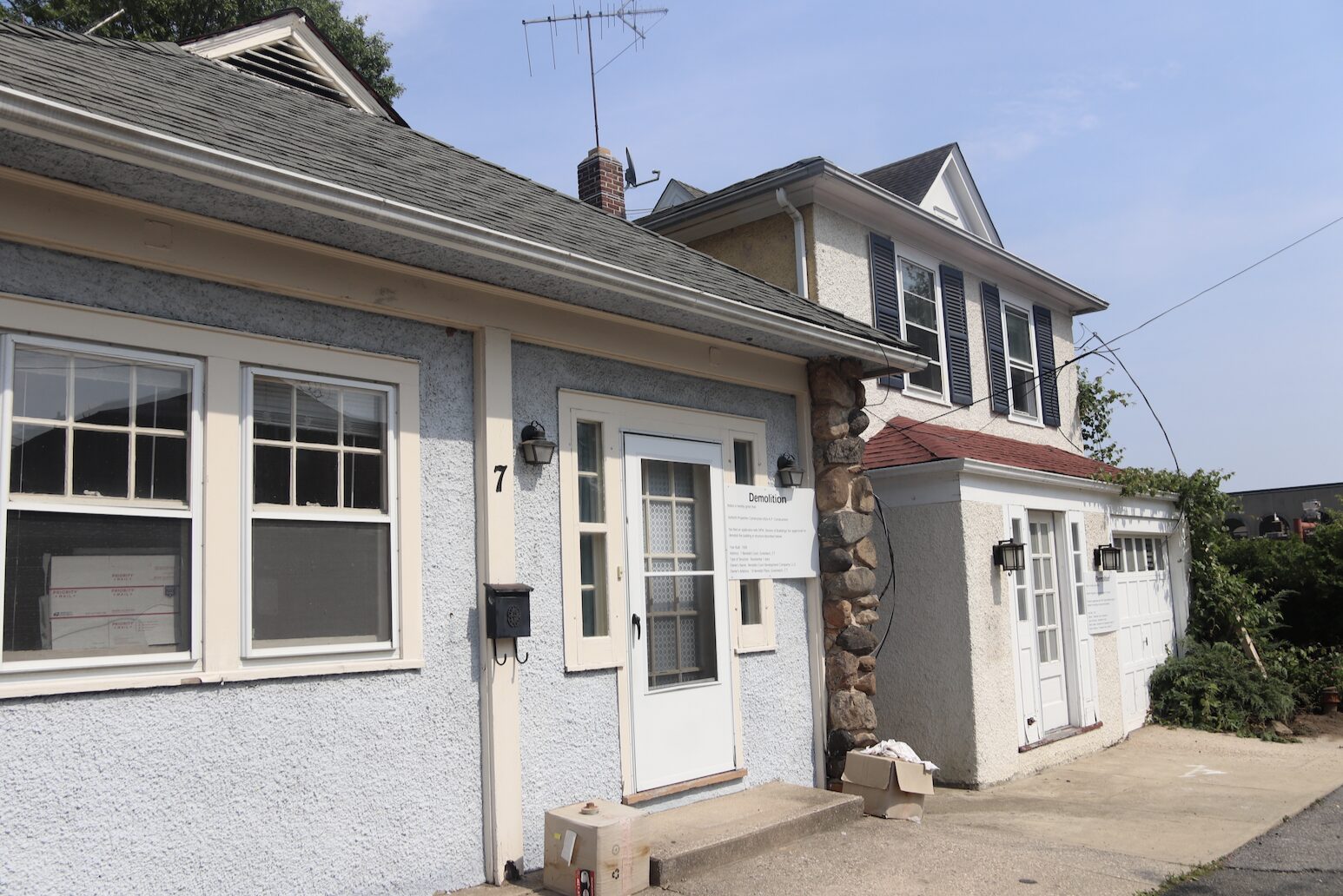
7 Benedict Court and 5 Benedict Court posted for demolition. June 5, 2025 Photo: Leslie Yager
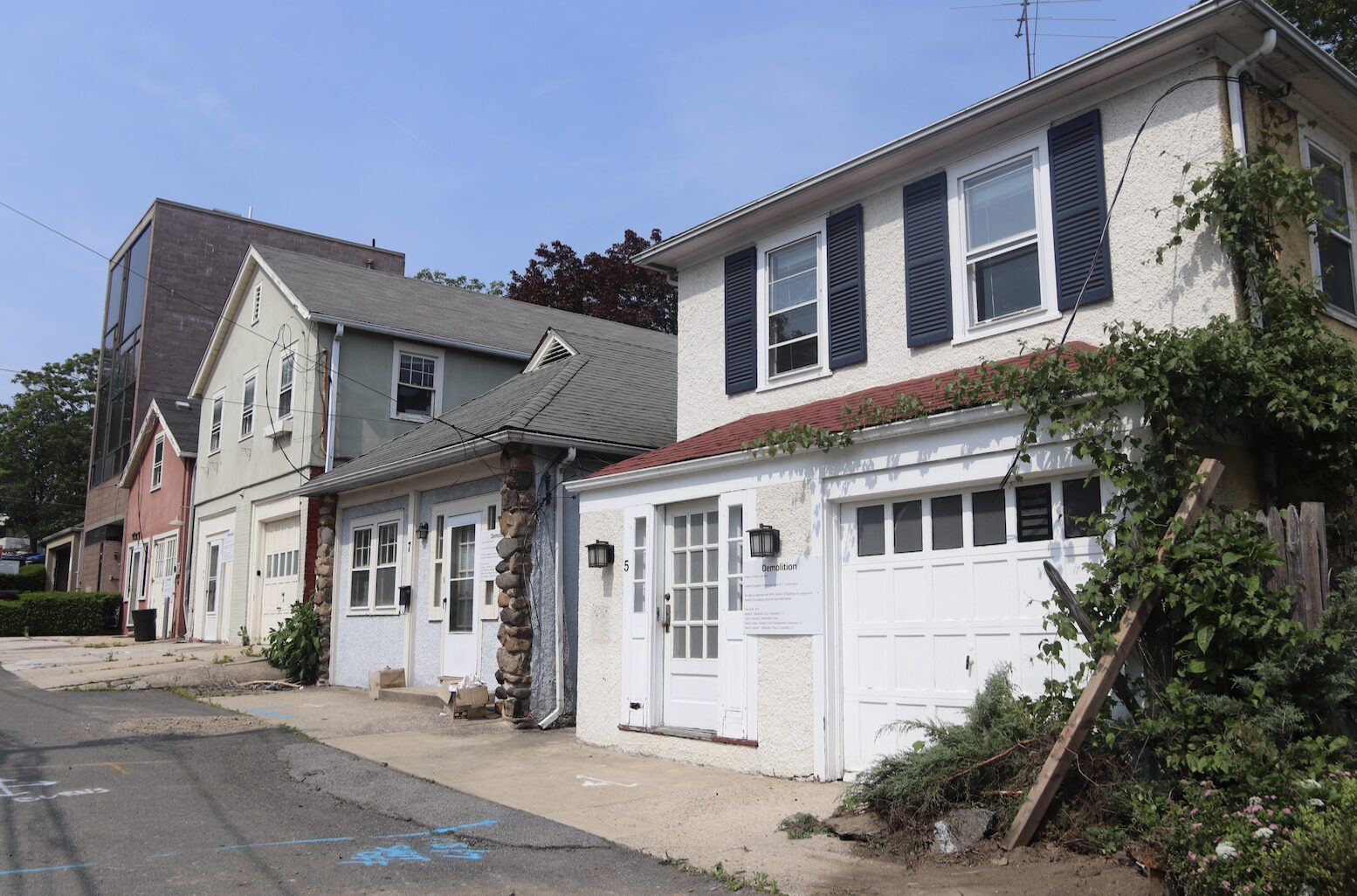
Former carriage houses on Benedict Court posted for demolition. June 5, 2025 Photo: Leslie Yager
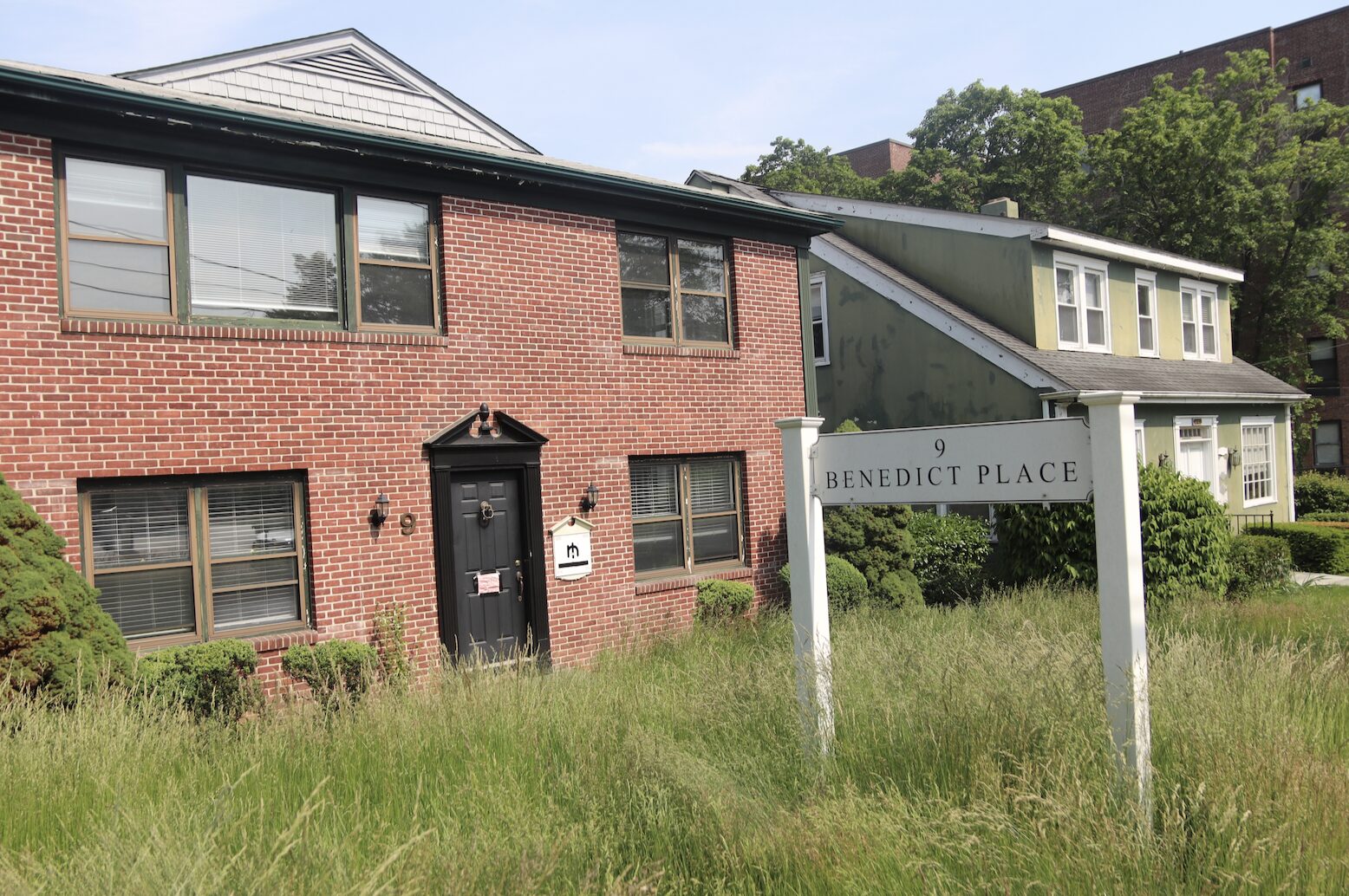
7 and 9 on Benedict Place posted for demolition. June 5, 2025 Photo: Leslie Yager

7 Benedict Place, posted for demolition, with 25 West Elm Street in background. June 5, 2025 Photo: Leslie Yager
See also:
Six Story, 120-Unit 8-30g approved behind St Mary Church in Downtown May 20, 2024
P&Z: Proposed Text Amendment to CGIO Zone Could Signal Major Downtown Redevelopment December 2017
Related Stories
Mason Street 8-30g Applicant Sues Town over Conditions of Approval Jan 17, 2025
Greenwich P&Z Approves Mason St 8-30g with Significant Modifications Dec 18, 2024
P&Z Approves Legal Settlement for 30 Unit Building to Replace Homes on Milbank Nov 28, 2019